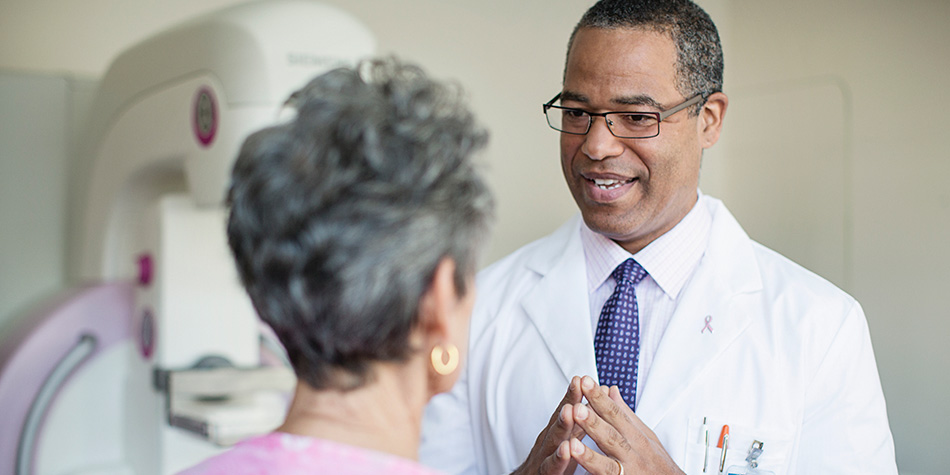
When diagnosed with breast cancer, one of the first topics you, your family and your care team will discuss is your treatment options. For many patients, surgery is the first treatment, followed by chemotherapy or radiation.
Surgical goals for breast cancer patients
The main goals of surgery for breast cancer patients are to:
- Remove as much of the cancer as possible (breast-conserving surgery or mastectomy)
- Find out whether the cancer has spread to lymph nodes (sentinel lymph node biopsy or axillary lymph node dissection)
- Restore the breast's shape after cancer has been removed (breast reconstruction)
- Relieve symptoms of breast cancer
Types of surgery to remove breast cancer
The two types of breast cancer surgery to remove the cancer altogether are breast-conserving surgery and a mastectomy.
Breast-conserving surgery, also known as a lumpectomy, is where only the part of the breast containing the tumor is removed. Its goal is to remove the tumor and surrounding tissue, but leave the rest. The amount actually removed depends on the size and location of the tumor. Many women who have early-stage cancers opt for this treatment, as well as those whose cancer is isolated to one spot or whose tumor is less than five centimeters in diameter.
A mastectomy is a surgery where the entire breast is removed, including all breast tissue and sometimes other tissues as well. The two most common types of mastectomies are a simple mastectomy (breast is removed, but lymph nodes and muscle tissues are not) and a double mastectomy (both breasts are removed). A mastectomy might be the best option for a woman who has a larger tumor, is pregnant, has the BRCA mutation, or if she has already had breast-conserving surgery and all of the cancer was not removed.
To choose between the two, it is important to talk to your doctors and your care team about the stage of the cancer and the risks and benefits of both surgical options. The advantage for many breast-conserving surgeries is that a woman keeps her breast, but she will likely also need radiation. With a mastectomy, her entire breast is removed, but she is less likely to also need radiation.
Lymph node surgeries may also be performed to remove lymph nodes under the arm and determine whether the cancer has spread there. This operation can be a part of a surgery to remove breast cancer, or can be separate.
Breast reconstruction surgery is a personal decision for a woman. Some women opt for immediate reconstruction, where they have reconstruction surgery at the time of their mastectomy; others may opt for this at a later time. If a woman is interested in reconstructive surgery, she will talk with her breast surgeon and plastic surgeon before the mastectomy to know the plan from the beginning and give the surgical team time to plan treatment options.